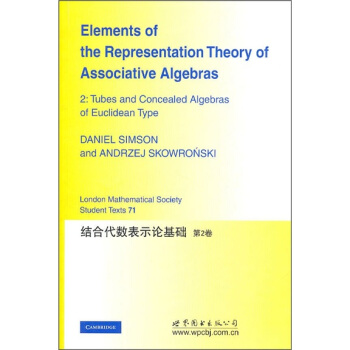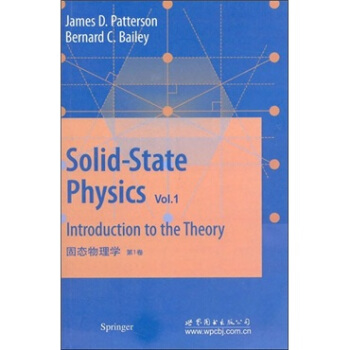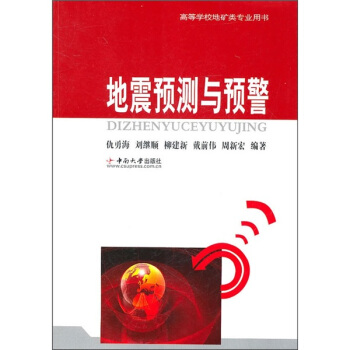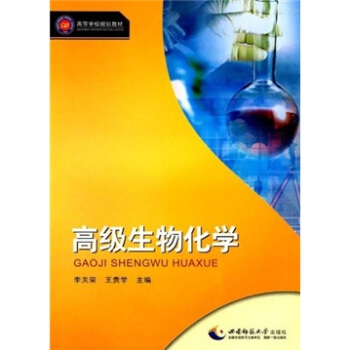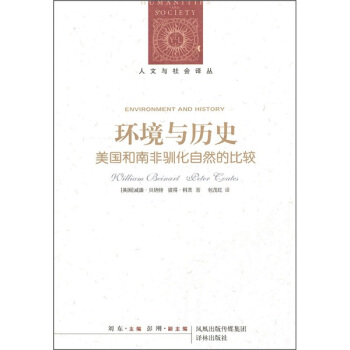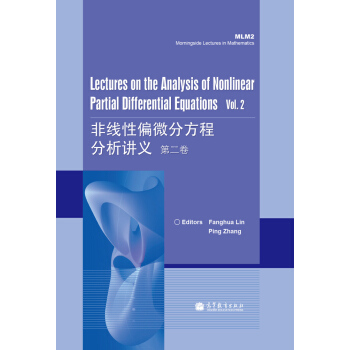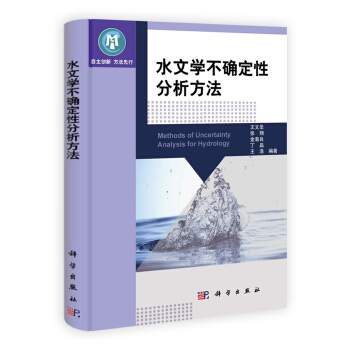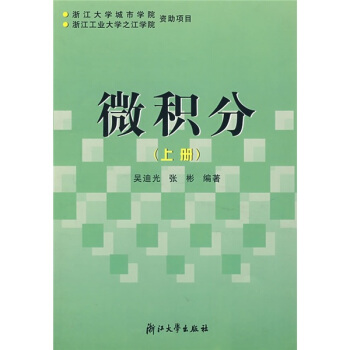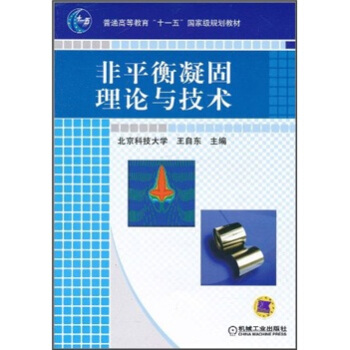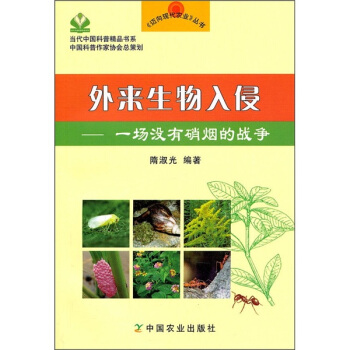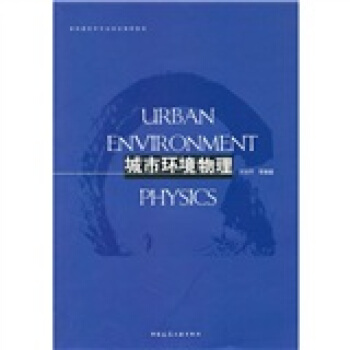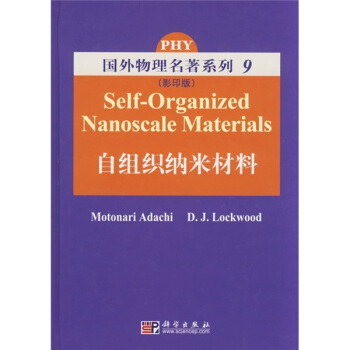

具體描述
內容簡介
《自組織納米材料(影印版)》包含瞭大量通過化學、仿生學途徑並運用自組織機製閤成納米材料並産生不同尺度的組件的方法。過去的幾十年裏。納米結構新穎的係統性能在自然科學的各個領域中得到廣泛認可,新技術的不斷發展吸引瞭各個領域的科學傢投入到與之相關的研究中。要全麵實現納米科學與技術的巨大應用前景,麵臨的重要挑戰就是尋找在原子尺度上調製排列結構的方法以及構造原子、介觀、宏觀各尺度層次的材料。《自組織納米材料(影印版)》介紹瞭納米結構自組裝領域從基礎理論到相關應用的大量令人鼓舞的最新進展,可供物理學、化學、生物學、工程和材料科學領域中科研人員和研究生參考。目錄
Preface1、Self-Assembled Si1-xGex Dots and Islands
Jean-Marc Baribeau,Nelson L.Rowell,and David J.Lockwood
1.1 Introduction
1.2 Si1-xGex Island Growth
1.2.1 Growth Modes in Heteroepitaxy
1.2.2 Si1-xGex Island Growth and Shape Evolution
1.2.3 Si1-xGex Island Composition and Strain Distribution
1.3 Stacked Si1-xGex Islands
1.3.1 Development of Morphological Instabilities in Heteroepitaxy
1.3.2 Synthesis,Structure,and Vertical Correlation
1.3.3 Vibrational Properties
1.3.4 Optical Properties
1.4 Engineering of Si1-xGex Islands
1.4.1 Influence of Surface Morphology
1.4.2 Influence of Adsorbed Species
1.5 Applications of Si1-xGex Islands and Dots
1.5.1 Photodetectors
1.5.2 Other Applications
1.6 Summary and Future Prospects
References
2、Synthesis of Titania Nanoerystals: Application for Dye-Sensitized Solar Cells
Motonari Adachi,Yusuke Murata,Fumin Wang,and Jinting Jiu
2.1 Formation of Titania Nanocrystals by Surfactant-Assisted Methods
2.1.1 Introduction: How to Control Morphology and Functionalize Ceramic Materials
2.1.2 Formation of Network Structure of Single Crystalline TiO2 Nanowires by the "Oriented Attachment" Mechanism
2.1.3 Morphological Control of Anatase Nanocrystals Using Dodecanediamine as a Surfactant
2.2 Application of TiO2 Network of Single-Crystalline Nanowires for Dye-Sensitized Solar Cells
2.2.1 Introduction
2.2.2 How to Make the Dye-Sensitized Solar Cells
2.2.3 Characterization of the Solar Cells Made of Network of Single-Crystalline Anatase Exposing Mainly the {101} Plane
2.3 Summary
References
3、Soft Synthesis of Inorganic Nanorods,Nanowires,and Nanotubes
Shu-Hong Yu and Yi-Tai Qian
3.1 Introduction
3.2 An Overview: Emerging Synthetic Routes for the Synthesis of Low-Dimensional Nanocrystals
3.2.1 "Hard" Approaches
3.2.2 "Soft" Approaches
3.3 Soft Synthesis of Low-Dimensional Nanocrystals
3.3.1 Hydrothermal/Solvothermal Processes
3.3.2 Synthesis of Semiconductor Nanorods/Nanowires by Solution-Liquid-Solid Mechanism
3.3.3 Capping Agents/Surfactant-Assisted Soft Synthesis
3.3.4 Bio-Inspired Approach for Complex Superstructures
3.3.5 Oriented Attachment Growth Mechanism
3.4 Summary and Outlook
References
4、Assembly of Zeolites and Crystalline Molecular Sieves
Jennifer L.Anthony and Mark E.Davis
4.1 Introduction
4.2 Thermodynamics of Synthesis Processes
4.3 Kinetics of Synthesis Processes
4.4 Assembly Processes
4.4.1 Proposed Mechanisms for Zeolite Assembly
4.4.2 MetaMon-Assisted Assembly Processes
4.5 Components of Synthesis
4.5.1 Organic Components
4.5.2 Inorganic Components
4.6 Chirality:Can a Designer Zeohte Be Synthesized
4.7 Summary
References
5、Molecular Imprinting by the Surface Sol-Gel Process:Templated Nanoporous Metal Oxide Thin Films for Molecular Recognition
Seung-Woo Lee and Toyoki Kunitake
5.1 Introduction
5.2 Surface Sol-Gel Process
5.2.1 Preparation of Amorphous Metal Oxide Thin Films
5.2.2 Rich Variety of Organic Components in Nanohybrid Layers
5.3 Molecular Imprinting in Amorphous Metal Oxide Films
5.3.1 Incorporation and Removal of Templates
5.3.2 Stability and Selectivity of Imprinted Sites
5.3.3 Nature of Imprinted Sites for Guest Binding
5.3.4 Multifunctional Nature of Imprinted Cavity
5.3.5 Varied Molecular Selectivity
5.4 Practical Potentials
5.4.1 Recognition of Biological Molecules
5.4.2 Contrivance for High Sensitivity
5.4.3 Recognition of Coordination Geometry
5.4.4 Nanoporous Thin Films with Ion-Exchange Sites
5.4.5 Direct Observation of Imprinted Cavity-Physical Cavity Versus Topological Cavity
5.5 Unsolved Problems and Future Prospects
References
6、Fabrication,Characterization,and Applications of Template-Synthesized Nanotubes and Nanotube Membranes
Punit Kohli and Charles R.Martin
6.1 Introduction
6.2 Nomenclature
6.3 Template Synthesis of Nanotubes
6.4 Silica Nanotubes
6.4.1 Attaching Different Functional Groups to the Inside Versus Outside Surfaces
6.4.2 Nanotubes for Chemical and Bioextraction and Biocatalysis:Demonstration of Potential Drug Detoxification Using Nanotubes
6.5 Template Synthesis of Nano Test Tubes
6.6 Nanotube Membranes for Bioseparations
6.6.1 Antibody-Functionalized Nanotube Membranes for Selective Enantiomeric Separations
6.6.2 Functionalized Nanotube Membranes with "Hairpin"-DNA Transporter with Single-Base Mismatch Selectivity
6.7 Conical Nanotubes: Mimicking Artificial Ion Channel
6.8 Conclusions
References
7、Synthesis and Characterization of Core-Shell Structured Metals
Tetsu Yonezawa
7.1 Introduction
7.2 Preparation of Core-Shell Bimetallic Nanoparticles
7.2.1 Preparation Procedures
7.2.2 Successive Reduction of the Corresponding Two Metal Ions
7.2.3 Simultaneous Reduction of the Corresponding Two Metal Ions
7.2.4 Other Systems
7.3 Characterization of Core-Shell Bimetallic Nanoparticles
7.3.1 X-ray Characterization
7.3.2 Electron Microscopic Observations
7.3.3 UV-vis Spectroscopy
7.3.4 IR Spectroscopy of Chemical Probes
7.4 Summary
References
8、Cobalt Nanocrystals Organized in Mesoseopie Scale
Marie-Paule Pileni
8.1 Introduction
8.2 Self-Organization of Cobalt Nanocrystals
8.3 Collective Magnetic Properties of Mesostructures Made of Magnetic Nanocrystals
8.4 Conclusion
References
9、Synthesis and Applications of Highly Ordered Anodic Porous Alumina
Hideki Masuda and Kazuyuki Nishio
9.1 Introduction
9.2 Synthesis of Highly Ordered Anodic Porous Alumina
9.2.1 Growth of Anodic Porous Alumina on Al
9.2.2 Synthesis of Highly Ordered Anodic Porous Alumina
9.2.3 Ideally Ordered Anodic Porous Alumina by the Pretexturing Process Using Molds
9.3 Ordered Nanostructures Based on Highly Ordered Anodic Porous Alumina
9.3.1 Nanocomposite Structures Using Highly Ordered Anodic Porous Alumina
9.3.2 Nanofabrication Using Anodic Porous Alumina Masks
9.3.3 Two-Step Replication Process for Functional Nanohole Arrays
9.3.4 Ordered Array of Biomolecules Using Highly Ordered Anodic Porous Alumina
9.4 Conclusions
References
Index
前言/序言
用戶評價
評分總而言之,這本《自組織納米材料(影印版)》是一部具有裏程碑意義的學術著作,它不僅係統地梳理瞭自組織納米材料領域的研究現狀,更指明瞭未來的發展方嚮。書中的每一個章節都充滿瞭深刻的見解和前沿的知識,對於任何對納米科學和材料工程感興趣的讀者來說,都是一本不可或缺的參考書。我強烈推薦這本書給所有希望深入瞭解自組織納米材料的同行和學生,相信它一定會為您帶來意想不到的收獲。
評分這本書所呈現的“多尺度自組織”視角,讓我對納米材料的認識上升到瞭一個新的高度。作者並沒有孤立地看待微觀粒子的自組織行為,而是將其置於宏觀係統和環境因素的相互作用中進行考量。這種宏觀與微觀相結閤的思維方式,對於理解復雜材料體係的形成和演化至關重要。我印象深刻的是,書中對“外部誘導自組織”的討論,詳細闡述瞭如何通過電場、磁場、光照等外部條件,來精確控製納米結構的形成,這無疑為納米材料的設計和應用提供瞭更廣闊的空間。
評分這本書的閱讀體驗可以說是一種智力上的探險。我特彆喜歡作者在闡述復雜概念時所采用的類比和圖示,這些精巧的設計極大地降低瞭理解門檻,讓非納米材料領域的讀者也能逐步掌握其中的精髓。比如,書中關於“自組裝”機製的描述,作者用一種形象化的方式,將復雜的分子間相互作用轉化為生動的故事,讀起來引人入勝,仿佛置身於一個微觀世界的奇妙旅程。這種敘述方式,在學術著作中並不多見,也正是它最吸引我的地方。
評分這本《自組織納米材料(影印版)》確實是一本讓人眼前一亮的學術著作。當我第一次翻開它時,就被其嚴謹的學術風格和深邃的研究內容所吸引。書中對自組織這一核心概念的探討,不僅僅局限於錶麵的現象描述,而是深入到微觀尺度下,揭示瞭物質在特定條件下如何自發地形成有序結構。我尤其欣賞作者在論述過程中,大量引用的前沿研究成果和實驗數據,這使得書中的觀點論證更加充分,也為讀者提供瞭一個清晰的研究脈絡。
評分《自組織納米材料(影印版)》不僅僅是一本理論書籍,更是一本能夠激發我科研靈感的寶藏。書中關於“功能性自組織”的章節,為我打開瞭新的思路。作者詳細介紹瞭如何通過調控自組織過程,來設計和製備具有特定光學、電子或催化性質的納米材料。我從中學習到瞭許多創新的實驗設計方法和材料錶徵技術,對於我目前正在進行的研究項目,提供瞭寶貴的藉鑒意義。每一次閱讀,都能從中獲得新的啓發,讓我對未來的研究方嚮更加充滿信心。
不錯不錯不錯不錯不錯
評分恩,挺不錯的,挺專業的
評分恩,挺不錯的,挺專業的
評分恩,挺不錯的,挺專業的
評分有一點是質量一般,殼子不知道什麼時候會掉掉
評分恩,挺不錯的,挺專業的
評分有一點是質量一般,殼子不知道什麼時候會掉掉
評分恩,挺不錯的,挺專業的
評分不錯不錯不錯不錯不錯
相關圖書
本站所有内容均为互联网搜索引擎提供的公开搜索信息,本站不存储任何数据与内容,任何内容与数据均与本站无关,如有需要请联系相关搜索引擎包括但不限于百度,google,bing,sogou 等
© 2025 book.tinynews.org All Rights Reserved. 静思书屋 版权所有


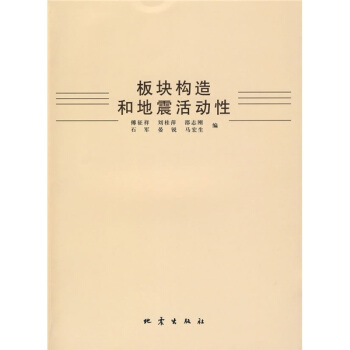
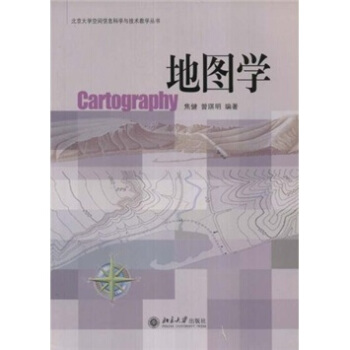

![Springer數學經典教材:經典巴拿赫空間1和2 [Classical Banach Spaces 1 and 2] pdf epub mobi 電子書 下載](https://pic.tinynews.org/10562555/69027d63-0cb6-40dc-8ec4-5b076a9ec8ac.jpg)

